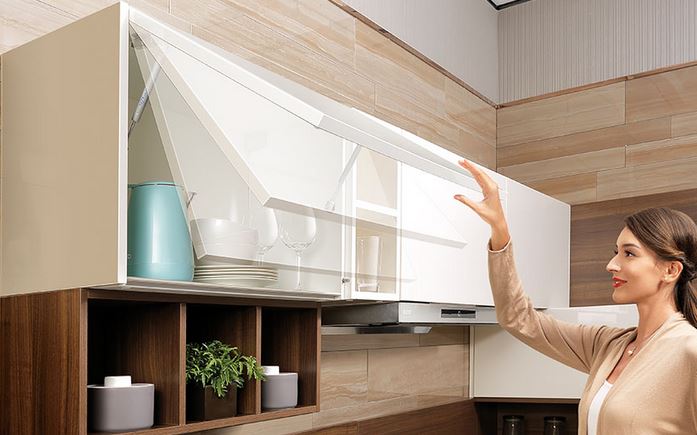Introduction to Kitchen Wall Cabinets
Kitchen wall cabinets are more than just storage spaces they’re the unsung heroes of your kitchen. They hold everything from spices to dinnerware, helping keep your culinary sanctuary organized and functional. However, over time, these essential fixtures can accumulate dust, grease, and grime. A little TLC goes a long way in maintaining their appearance and longevity.
Have you ever opened your cabinet doors only to be greeted by sticky surfaces or a jumble of items? If so, it’s time to take action! With the right cleaning techniques and maintenance tips, you can transform those tired-looking cabinets into sparkling highlights of your kitchen. Let’s dive into how you can give your kitchen wall cabinets the care they deserve!
Why Cleaning and Maintenance is Important
Cleaning and maintaining kitchen wall cabinets is essential for several reasons. First, it enhances the overall look of your kitchen. Dust and grease can build up over time, making even the most beautiful cabinets appear dull and uninviting.
Regular maintenance also extends the life of your cabinetry. Keeping them clean prevents wear and tear from stubborn grime that can lead to damage in wood finishes or paint.
Moreover, a well-maintained kitchen promotes hygiene. Food particles or spills left unattended can attract pests or cause mold growth.
Organized cabinets improve functionality. When everything is neat and accessible, cooking becomes more enjoyable rather than a frustrating scavenger hunt through cluttered shelves. Prioritizing cleaning ensures your space remains both stylish and practical for everyday use.
Step-by-Step Guide for Cleaning Kitchen Wall Cabinets
Start by emptying your kitchen wall cabinets. Remove all items, including dishes and pantry goods. This gives you a clear view of dirt and clutter.
Next, dust the surfaces using a microfiber cloth or duster. Focus on corners and crevices where grime tends to accumulate.
Prepare a gentle cleaning solution with warm water and mild dish soap. Dampen a soft sponge in the mixture, wringing it out so it’s not dripping wet. Wipe down cabinet exteriors carefully.
For stubborn spots, use baking soda as an abrasive cleaner. Make a paste with water for extra scrubbing power without scratching the finish.
Rinse the sponge frequently in clean water to avoid spreading dirt around. Dry each surface thoroughly with another micro-fiber cloth to prevent streaks or moisture buildup.
Don’t forget about handles and knobs they often collect grease too! Use your cleaning solution here as well before drying them off completely.
Tips for Organizing and Maintaining Cabinets
To keep your kitchen wall cabinets orderly, start by decluttering.Donate or recycle items that are expired or unused.
Use clear containers for smaller items like spices and snacks. This not only maximizes space but also allows you to see at a glance what you have on hand.
Label shelves and bins to create an organized system. Easy identification saves time when cooking or prepping meals.
Consider adding shelf risers for better visibility of stacked dishes or jars. They make it simpler to reach the back without causing a mess.
Regularly wipe down cabinet surfaces with mild soap and water. This prevents dust build-up and keeps them looking fresh between deep cleans.
Schedule seasonal organization sessions to maintain order throughout the year, ensuring your kitchen remains functional and inviting.

Common Mistakes to Avoid
When cleaning kitchen wall cabinets, many people overlook the importance of using the right cleaning products. Harsh chemicals can damage finishes and wood surfaces, leading to costly repairs.
Another common mistake is neglecting to test a small area before applying any cleaner. This step ensures that your chosen solution won’t cause discoloration or other unwanted effects.
Forgetting hard-to-reach areas is another trap. Dust and grime tend to accumulate in corners and behind appliances, so be thorough during your cleaning routine.
Some also underestimate the impact of humidity in their kitchens. Excess moisture can warp cabinet materials over time, so consider using exhaust fans while cooking.
Don’t let clutter build up inside the cabinets. Regularly reassess what you store there for better organization and ease of access.
DIY Solutions for Tough Stains and Damage
Tough stains on kitchen wall cabinets can be a real hassle. However, there are several DIY solutions that can restore their beauty without the need for harsh chemicals.
For greasy spots, mix baking soda with water to form a paste. Apply it gently with a soft cloth and watch the grease lift away. Rinse thoroughly afterward.
Water stains? Try using white vinegar mixed with olive oil. This natural solution not only cleans but also conditions wood surfaces, leaving them shiny and smooth.
If you encounter scratches or scuff marks, consider using a walnut! Rub the meat of the nut over the affected area; its oils will help fill in minor scratches effectively.
For deeper damage like chipped paint, touch-up markers specifically designed for cabinetry can work wonders. Just ensure they match your cabinet colors before applying.
Professional Help: When to Hire a Cabinet Refinishing Service
Sometimes, DIY cleaning and maintenance isn’t enough to restore the beauty of your kitchen wall cabinets. If you notice deep scratches, water damage, or faded finishes that seem beyond repair, it may be time to call in a professional.
A cabinet refinishing service can bring new life to worn-out surfaces. They possess the expertise needed to handle various materials and finishes without causing further damage. This is especially crucial for high-end or antique cabinets.
If you’re planning a major kitchen renovation but want to keep your existing cabinets, professionals can help ensure they match the new design seamlessly. Their skills in color matching and application techniques make them invaluable during such projects.
Consider hiring experts if you lack time or confidence in tackling extensive repairs yourself. Investing in professional help can save money long-term by prolonging the lifespan of your cabinetry while enhancing its aesthetic appeal.
Conclusion:
Taking the time to clean and maintain your kitchen wall cabinets can transform not just their appearance, but also the overall feel of your kitchen. A well-kept space invites creativity and joy in cooking, making meal prep a more pleasant experience.
By following the step-by-step guide for cleaning, organizing effectively, and avoiding common pitfalls, you set yourself up for success. Remember that tough stains don’t have to be a nuisance; with DIY solutions at hand or by seeking professional help when necessary, your cabinets can always look their best.
Regular maintenance is key to longevity. With these practices in place, you’ll not only enjoy sparkling clean surfaces but also pride in a beautifully maintained home environment where every meal becomes an occasion worth celebrating.
